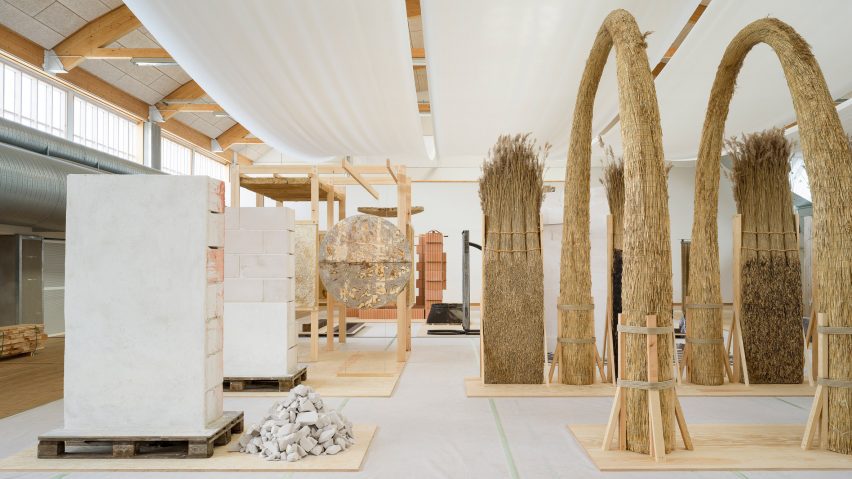
Reset Materials exhibition shows building fragments made from eco-friendly materials
An exhibition has opened at Copenhagen Contemporary that suggests what a city made out of experimental biomaterials might look like.
Named Reset Materials, the exhibition at the Copenhagen-based art centre contains a showcase of architectural fragments made from 10 different low-carbon materials, including earth, biocement, mycelium, silicon and straw.
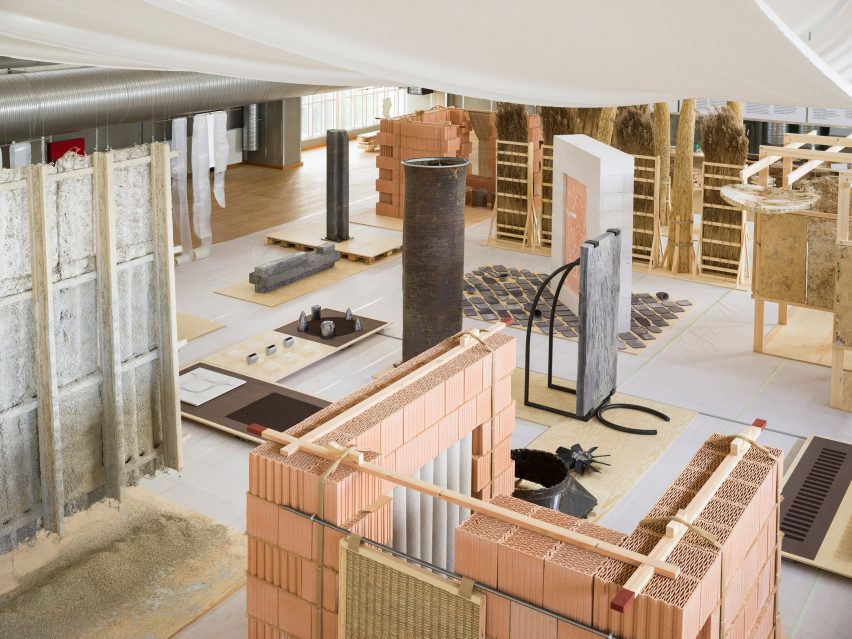
Overseen by Swiss architect and curator Chrissie Muhr, the exhibition is the result of 10 collaborations between artists and architects to explore how these materials might be used in new ways.
Also featured are hempcrete, aerated concrete, recycled plastic, waste wood and plant fibres.
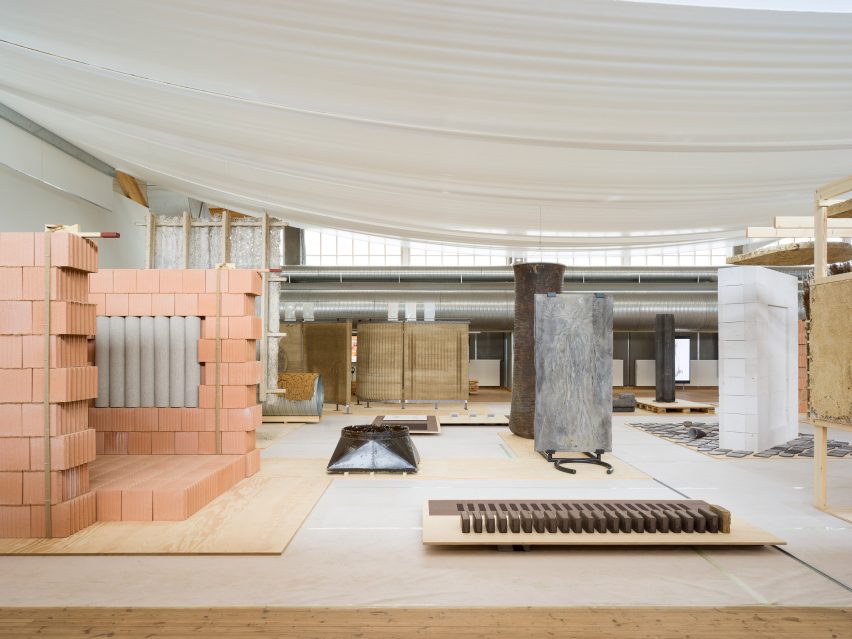
Unlike some material-focused exhibitions, Reset Materials aims to give visitors a real sense of how buildings and structures made out of these materials might look and feel.
Visitors are invited to explore a three-dimensional landscape filled with large-scale objects and installations that they can not only see up close, but also touch and smell.
The aim, according to Muhr, was not to champion individual materials, but to show how they might be used together.
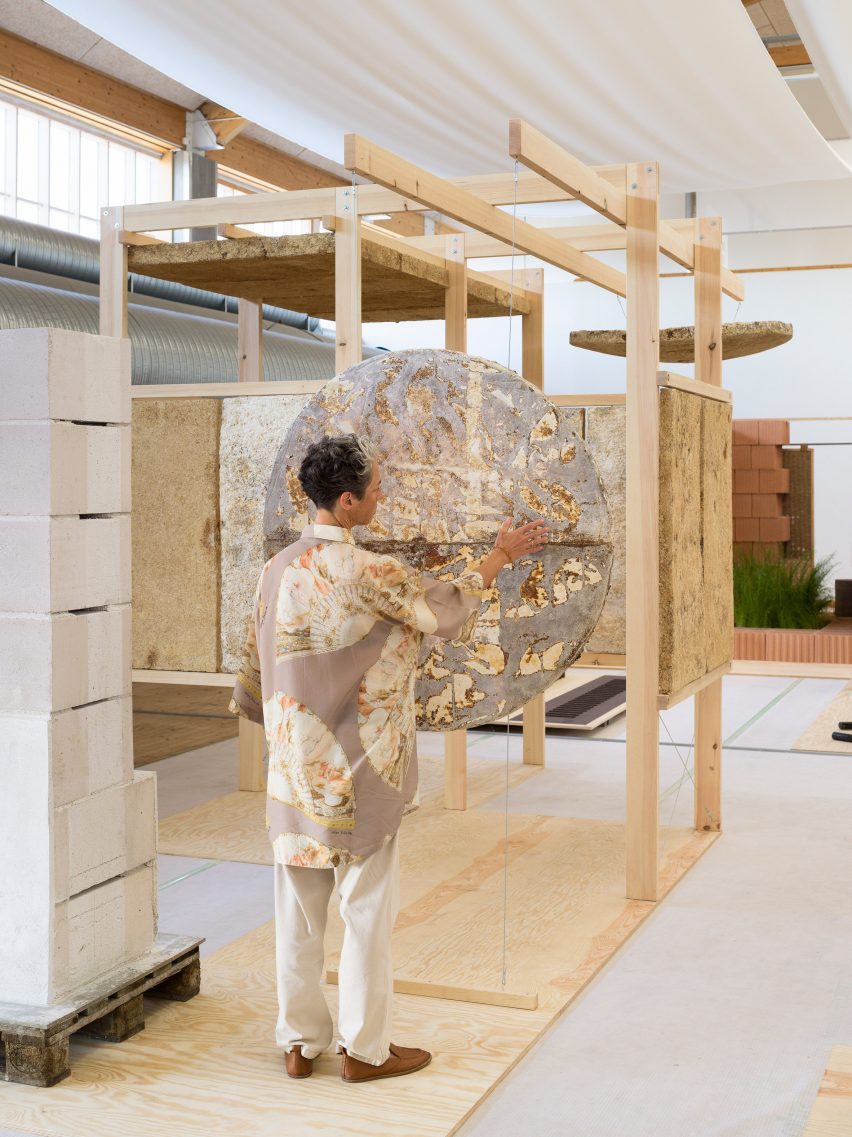
"The aim was to create one landscape within the space," she told Dezeen.
"It's about expanding the material cannon," she continued. "We're opening it up and showing the complexity of it, that there's not one winning material. We have to embrace this diversity."
The exhibition features contributions from several leading architecture studios, including 3XN and Henning Larsen Architects, as well as artists such as Jakob Steen and Studio ThinkingHand.

Among the most eye-catching exhibits is a series of elements made from straw, the result of a project led by the Royal Danish Academy's Centre for Industrialised Architecture (CINARK) and artist Tove Storch.
The project looks at how bundled reeds can become load-bearing arches, while thatched panels could be heat-treated to improve their fire safety.
One of the most impressive examples of material innovation comes from artist Honey Biba Beckerlee and architecture studio Lendager, who are investigating new uses for silicon, the second-most abundant element on Earth after oxygen.
They present a range of product samples, including bricks made by combining silicon waste with earth, and tiles that feature a glaze made from silicon dust.

Danish architecture studio ReVærk teamed up with designer Kasper Kjeldgaard to explore how ways of improving the tensile strength of rammed earth, demonstrated by a pair of curved walls.
Meanwhile, Royal Danish Academy professor Frans Drewniak and designer Sara Martinsen present architectural fixtures and fittings – from walls to roller blinds – made from nettle, hemp, flax and eelgrass fibres.
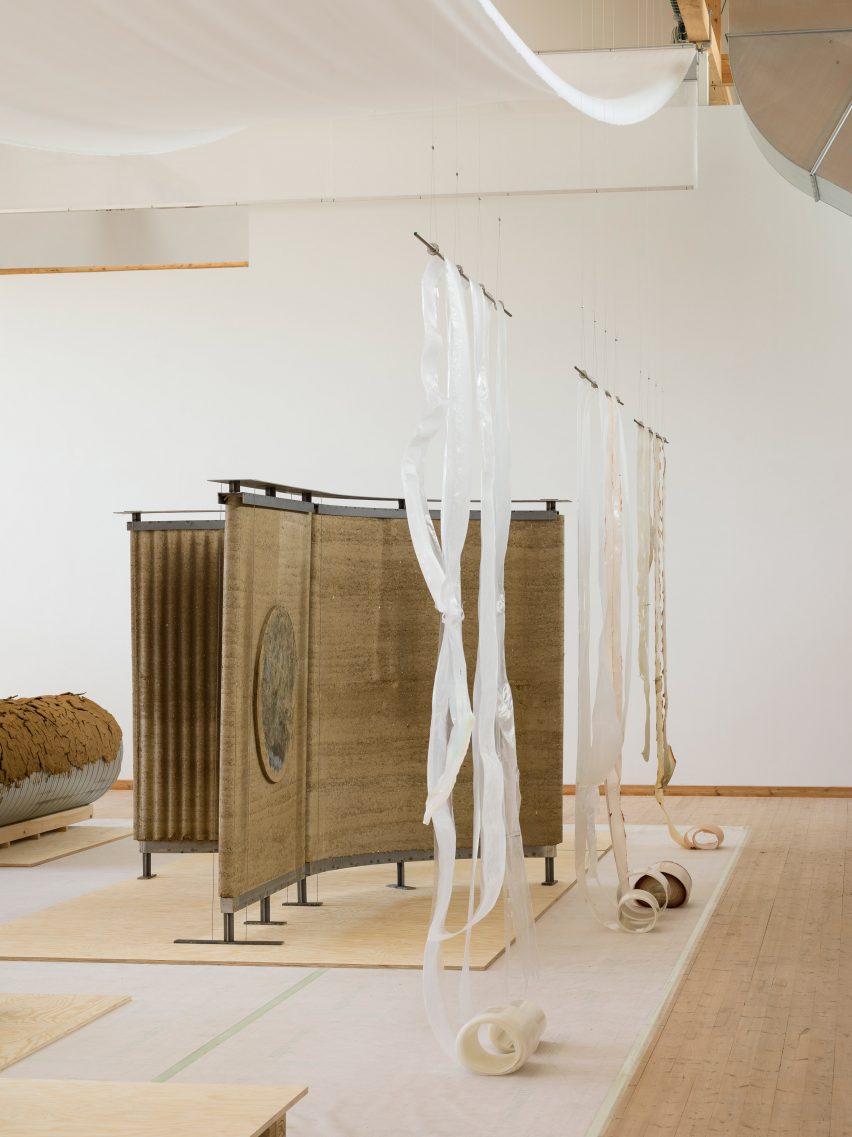
Muhr said a key starting point for Reset Materials was the Louis Kahn quote: "What do you want, brick?"
"We wanted to enhance and empower each material to show its potential, to show what its biggest strength can be or should be," she said.
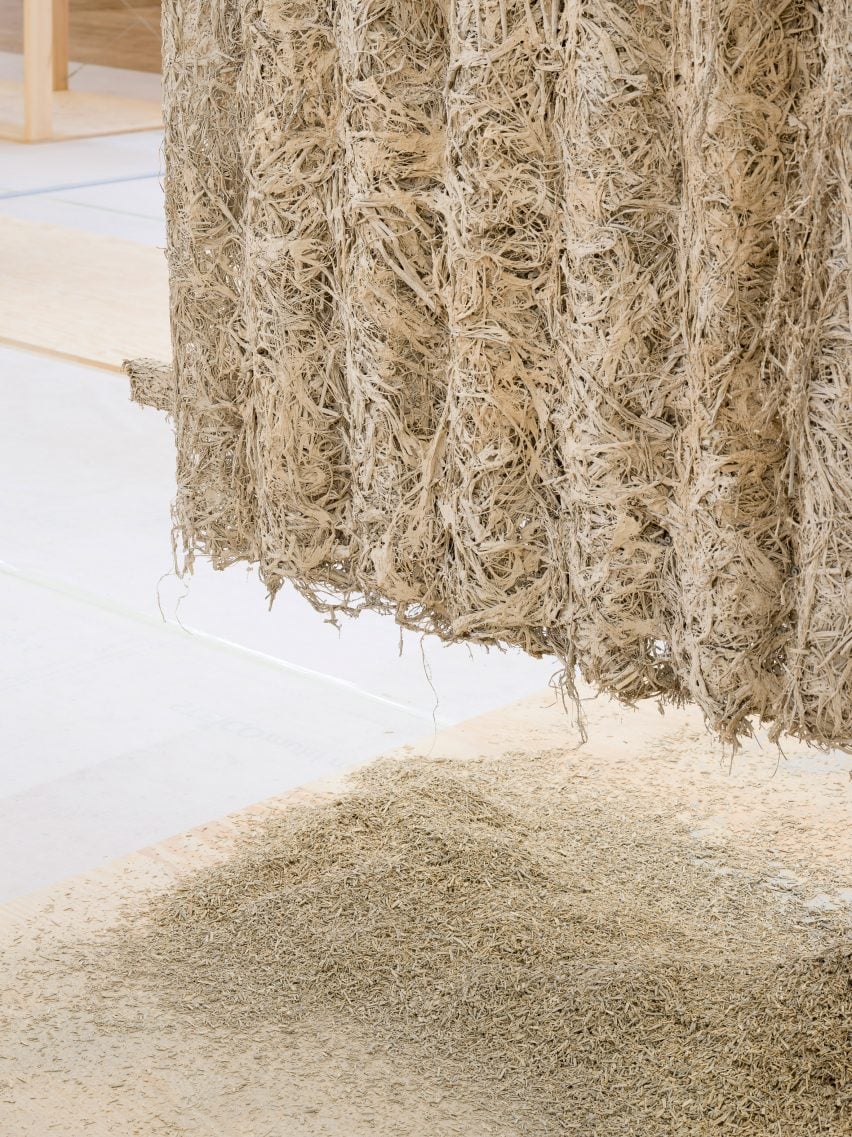
As well as the large-scale fragments, the exhibition includes a table where visitors can discover biomaterial samples.
This table was created by the team working with waste wood, made up of architects from Office Kim Lenschow and Bonnie Hvillum of biomaterials specialist Natural Material Studio.
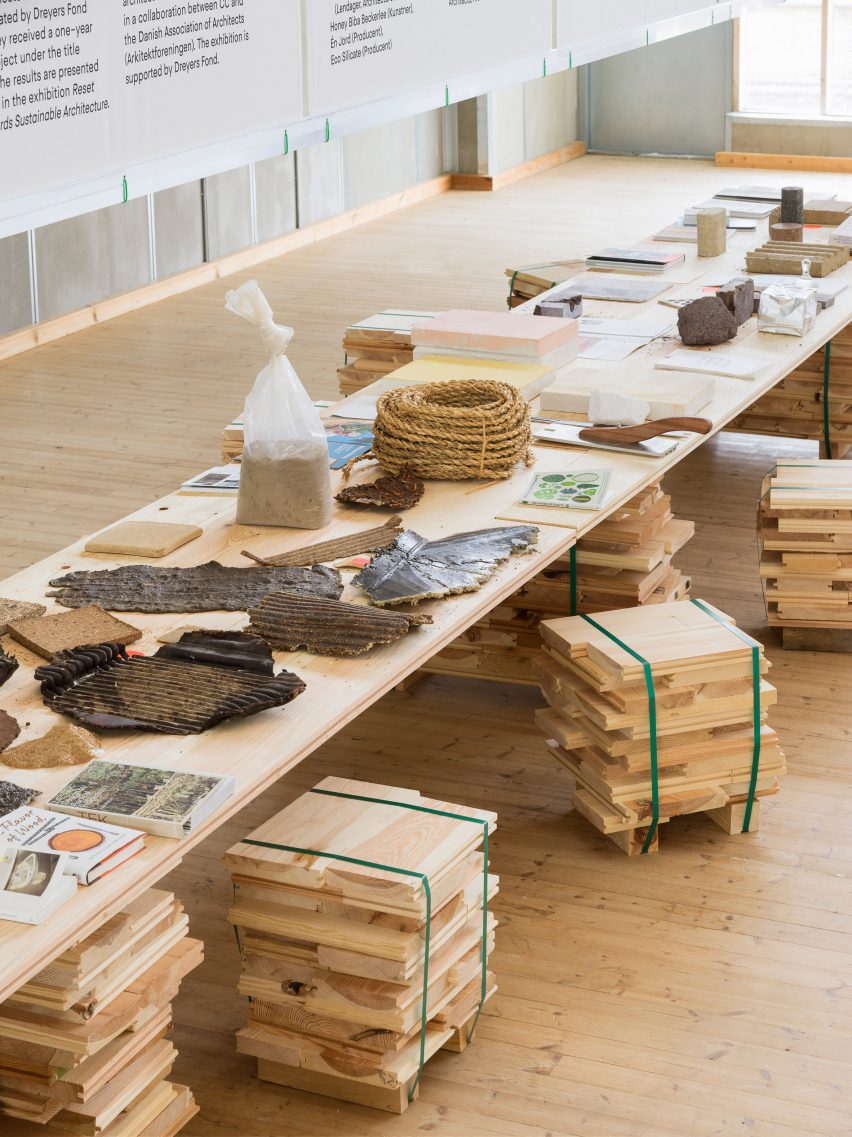
Using offcuts from wood flooring company Dinesen, they created a table that spans the length of the room, plus a series of stools made by bundling smaller pieces of wood together.
A no-waste approach was also applied to other elements of the exhibition design, by Archival Studies. The flooring surface is a recycled membrane sourced from a building site, while textile hangs from the ceiling overhead.
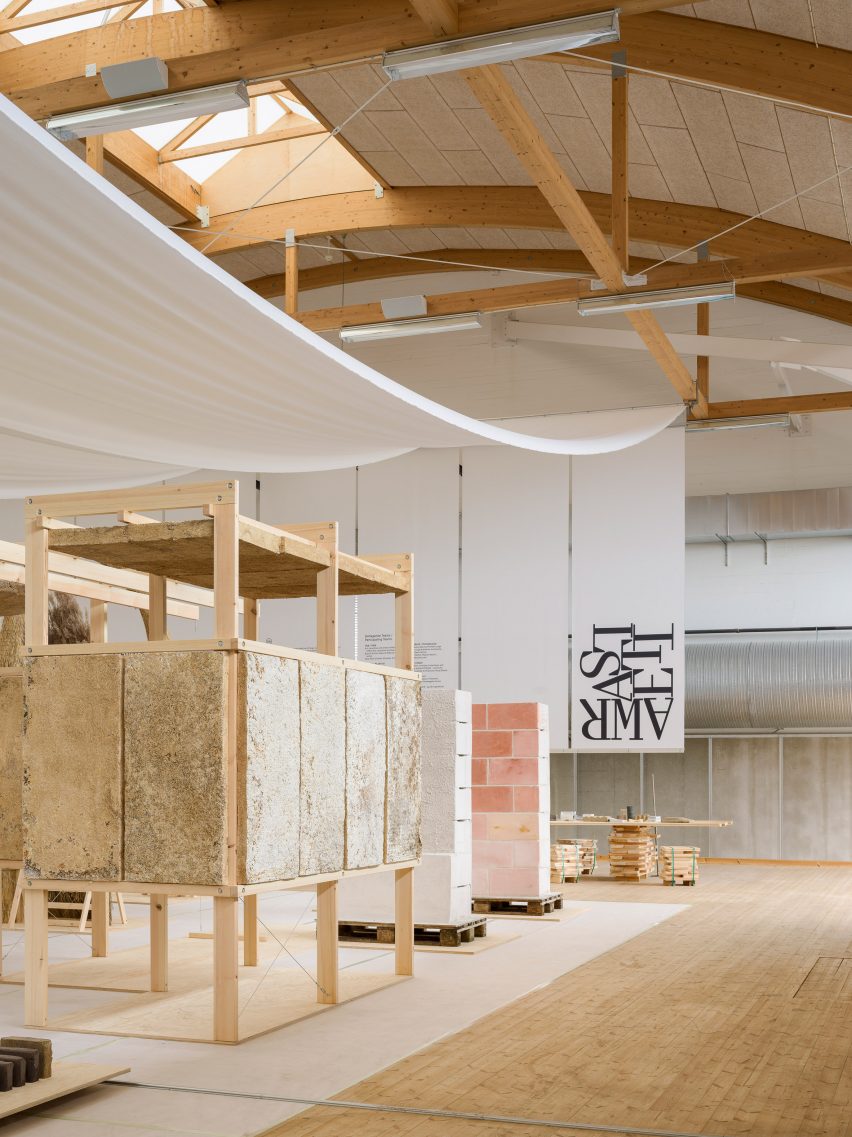
"It's a little bit like an urban layout within the space," added Muhr. "We wanted to bring different levels of intimacy and possibility for bodily encounter with the materials."
The exhibition was developed in partnership with the Danish Association of Architects.
Reset Materials is on show at Copenhagen Contemporary from 30 June to 28 September 2023. See Dezeen Events Guide for an up-to-date list of architecture and design events around the world.
The photography is by Hampus Berndtson.